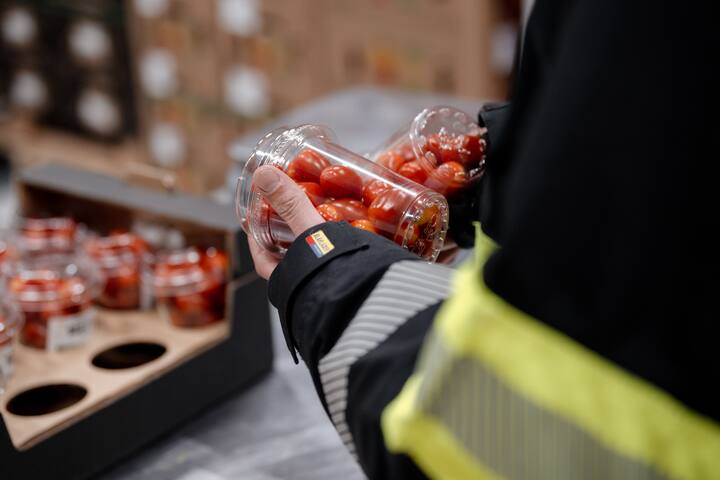
“Free from” allergen claims
“Free from” allergen claims
Product labels contain a lot of information about allergens. Sometimes “free from” allergen claims such as “gluten-free” or “lactose-free” are mentioned. Claims are voluntary statements on packaging. A claim emphasises a particular characteristic of a product, in this case its allergen-free status. As a company, what guidelines must you comply with if you want to make such an allergen claim? And what does a “free from” statement mean for production practices?
Gluten-free
The use of the claim “gluten-free” is linked to requirements set out in Implementing Regulation (EU) No 828/2014. Among other things, this states that gluten-free products may contain a maximum of 20 mg/kg (or ppm) of gluten. Therefore, the term “gluten-free” and the gluten-free logo may not be used if more than 20 mg/kg of gluten is detectable.
If a product contains a gluten-containing ingredient, this must always be stated in the list of ingredients in accordance with Regulation (EU) No. 1169/2011. It is therefore possible that a product may carry a “gluten-free” claim, while the list of ingredients indicates a gluten-containing grain as an allergen. To avoid confusion, it is advisable in such cases to make a note next to the “gluten-free” statement.
Other “free-from” claims
The use of claims other than gluten-free is not linked to legislation. Claims such as “milk-free” and “lactose-free” are not linked to legally permitted values. The term “allergen-free” is also not defined in legislation. In practice, this statement therefore means that the allergen in question is not detectable in the product. However, various retailers do have their own requirements for “free-from” allergen claims.
For statements such as “free from allergens”, it is advisable to specify which allergens are not present. Provide clarity to consumers so that they do not expect the product to be free from allergens other than the legal allergens listed in Annex II of Regulation (EU) No 1169/2011. This claim is also not recommended for products that consumers do not expect to contain allergens, such as allergen-free apple juice. Claims or other voluntary information on packaging must not be misleading, confusing or ambiguous.

Allergen management
If your company wants to make a “free-from” claim on its packaging, it is important that your allergen management is in order. There is more to it than just correct labelling. In 2015, BRCGS and FDF (Food and Drink Federation) jointly published the handy guide Guidance on ‘Free-From’ Allergen Claims, due to the increasing use of ‘free-from’ allergen claims. The guideline includes a step-by-step plan based on four principles:
The product's recipe must not contain any allergenic ingredients, including additives and processing aids. But don't forget to request the allergen-free status of packaging materials and lubricants.
Production takes place in an environment where strict GMP (Good Manufacturing Practices) and allergen management are maintained to prevent cross-contamination. The SimplyOK certification scheme makes it possible to assess the company's allergen management system in practice using a step-by-step plan.
An analysis plan is in place, whereby the product is tested for the absence of the allergen. In addition to product testing, it is also important to regularly verify that the production environment is free of allergens.
The communication of the “free from” claim must comply with relevant legal requirements. Catering organisations or other companies where food is presented unpackaged must give careful consideration to the way in which they communicate this information.
Allergy warning
An additional allergy warning for an allergen that is not one of the fourteen legally required allergens is a type of claim that is not yet widely used. This statement is a warning about a possible cross-reaction. It does not warn of cross-contamination that may have occurred during production. If someone is allergic to a certain substance, it is possible that allergic reactions may also occur with other substances whose proteins are similar.
An example is a reaction to peas when the consumer has an allergy to legumes. When assessing novel foods, allergenicity and cross-reactions are among the factors taken into account. When using rapeseed protein, it is a legal requirement to include the following additional allergy warning: “rapeseed protein may cause allergic reactions in consumers who are allergic to mustard”. All conditions for novel foods can be found in the Union list of novel foods in the consolidated version of Implementing Regulation (EU) 2017/2470.
Calculation tools
Calculation tools based on reference values established by VITAL®, NVWA, the scientific committee of FAVV or FAO/WHO cannot be used to substantiate a “free from” claim. As stated earlier, this claim is equivalent to no detection of the allergen in question, whereas the calculation methods mentioned here calculate what the quantitative cross-contamination may be and whether it exceeds a reference value. If there is a risk of cross-contamination, no ‘free from’ claim can be used for any claim other than a ‘gluten-free’ claim, even though a low dose may not pose a risk to allergic consumers.
Need help?
Do you have questions about allergen labelling? Our labelling specialists are happy to help. Please contact us.
Auteur: Krista Baar
Senior Labelling specialist